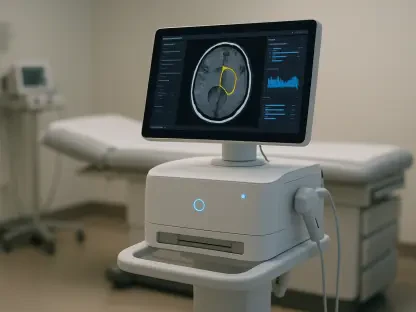The healthcare sector in the United States is facing a mounting crisis due to severe labor shortages. This predicament is leaving millions, especially in rural areas, without adequate access to medical care. Modernizing immigration policies presents a promising solution to bridge the gap in the healthcare workforce.
Addressing Healthcare Deserts
The Extent of Healthcare Shortages
According to the Health Resources and Services Administration, 77 million Americans live in areas with limited access to healthcare services. This issue is projected to worsen, with a deficit of over 187,000 physicians anticipated in the next decade. The lack of healthcare professionals in these regions leads to significant healthcare deserts, leaving vast populations without essential medical care. This disparity is alarming, as it indicates that without substantial changes to current policies, access to healthcare could become even more limited, particularly in the most underserved communities.
The healthcare shortages are not restricted to rural areas alone; urban and suburban areas are also feeling the strain. However, the limitations in rural regions are significantly more pronounced. These areas often struggle more with retaining healthcare professionals due to isolation, lower salaries, and limited professional development opportunities. As the population continues to grow and age, the demand for healthcare will increase, exacerbating the crisis further unless immediate action is taken. The focus should be on both short-term strategies to alleviate immediate needs and long-term reforms to sustain healthcare workforce growth.
The Impact on Rural Communities
Rural areas are particularly hard-hit by these shortages, where the lack of healthcare providers is most acute. Without intervention, these communities will continue to suffer from inadequate medical care. The demographic characteristics of rural populations, which often include higher proportions of elderly individuals and those with chronic illnesses, make continuous healthcare access critical for maintaining community health. The scarcity of healthcare professionals in these regions leads to longer wait times for patients, increased travel distances for medical care, and overall poorer health outcomes compared to urban counterparts.
In rural settings, local healthcare facilities often operate on tight budgets and face difficulties in recruiting and retaining staff. This means that residents of these areas are at a considerable disadvantage in terms of accessing timely and effective healthcare services. Measures to improve access must address these root causes, such as enhancing incentives for healthcare professionals to work in rural settings and improving infrastructure to support their practice. Fostering a multi-faceted approach to healthcare access, including telehealth services and mobile clinics, could help mitigate some of these challenges, but the need for onsite medical professionals remains crucial for comprehensive care.
Utilizing Foreign Talent
The Underutilized Resource of Foreign Students
Foreign students in the United States represent a highly skilled pool of potential healthcare professionals. Despite their capabilities, restrictive immigration policies often prevent their full integration into the U.S. healthcare system. Many foreign students who have completed rigorous training in U.S. medical schools face bureaucratic hurdles that make it difficult for them to transition into the workforce. Modernizing immigration policies could help harness this untapped resource, ensuring that their skills are utilized to address pressing healthcare needs.
The barriers faced by foreign students include lengthy visa processes, limitations on the number of residency positions available, and requirements to return to their home countries after graduation. Reforming these policies to create more streamlined pathways for foreign-trained physicians to remain in the United States would be a strategic move to alleviate healthcare labor shortages. Additional efforts, such as extending visa durations and providing clear and efficient routes to permanent residency for healthcare professionals, could attract and retain talent essential for ensuring an adequately staffed healthcare system.
Gaining Support for Skilled Immigration
President Donald Trump has shown support for the immigration of highly skilled workers. This stance highlights the possibility of combining strict border controls with a welcoming approach to skilled, legal immigration. Recognition of the need for high-skilled workers in sectors like healthcare demonstrates an understanding that targeted immigration can complement national interests without compromising security concerns. Support for skilled immigration of healthcare professionals can be bolstered by emphasizing the unique contributions these individuals can make during healthcare crises and shortage periods.
Combining policies that ensure both secure borders and the integration of skilled workers is essential. Such an approach promotes legal immigration avenues while addressing labor shortages in critical sectors. Creating focused immigration policies that prioritize healthcare professionals, such as expedited visa processing and clearer residency pathways, would help bridge the workforce gaps. Additionally, public and political support for skilled immigration can be fostered by emphasizing its benefits, including improved healthcare access and economic growth stimulated by a well-staffed healthcare system.
The Aging Workforce Challenge
Retirement Trends in Healthcare
The healthcare workforce is aging, with 45% of active physicians over the age of 55. By 2030, a significant portion of this group will retire, intensifying the existing shortages. This looming wave of retirements presents a critical challenge that must be addressed promptly to prevent further strain on the healthcare system. With a large segment of experienced professionals exiting the workforce, an urgency arises to replace them with well-equipped and trained personnel, which current domestic avenues may fall short of providing timely.
The attrition rate due to retirement is compounded by the decreasing number of new entrants into the healthcare field. The time-intensive and costly nature of medical education, along with the demanding work environment, has deterred many potential candidates. Thus, the pipeline of new medical professionals is not equipped to match the pace of those leaving. Addressing this mismatch by tapping into foreign talent through smarter immigration policies can help sustain a balanced workforce, ensuring consistent healthcare service delivery.
Burnout and Workforce Attrition
Pandemic-related burnout has further exacerbated the workforce deficit. Younger professionals are deterred from entering the field, compounding the demographic challenges. The combination of intense workloads, emotional strain, and long hours during the pandemic has significantly impacted healthcare workers, leading to higher rates of burnout and attrition. Such conditions have forced many experienced professionals to retire early or switch careers, creating an even larger gap in healthcare availability.
Managing workforce attrition requires a multifaceted approach, including addressing the mental health needs of healthcare workers, offering competitive compensation, and creating supportive workplaces. In addition, modernized immigration policies that allow foreign-trained professionals to step in can relieve the pressure on the existing workforce. Facilitating smarter immigration channels can mitigate burnout by ensuring a steady flow of qualified professionals who can share the workload, thus improving overall morale and retention rates among healthcare staff.
Legislative Solutions
The Conrad 30 Program
The Conrad 30 program allows states to retain foreign physicians in underserved areas, bypassing federal return requirements. This initiative is effective but can be further optimized. Through this program, each state has the authority to retain up to 30 foreign physicians annually who can contribute significantly to healthcare in underserved communities. However, refining this program to increase efficiency and broaden its scope can yield even better results in addressing healthcare shortages.
Improvements to the Conrad 30 program could include streamlining application processes, providing better support mechanisms for participating physicians, and increasing awareness among states and healthcare institutions about its benefits. Efforts could also be directed toward expanding the number of slots available or reallocating unused waivers to states with greater needs. By amplifying the impact of the Conrad 30 program, the healthcare system can better capitalize on the expertise and willingness of foreign-trained doctors to work in underserved areas, thereby enhancing the accessibility and quality of medical care.
The DOCTORS Act
The bipartisan DOCTORS Act aims to improve the Conrad 30 program, redistributing underutilized waivers to states with greater needs. This reform could retain over 100 U.S.-trained physicians in rural areas without increasing overall waiver numbers. By targeting the redistribution of waivers, the DOCTORS Act aims to maximize the efficiency and utility of existing resources, ensuring that areas with the most critical shortages benefit directly. This legislative effort underscores the importance of adaptable policy frameworks to meet dynamic healthcare needs.
Such reforms reflect the legislative commitment to leveraging skilled foreign professionals to bolster the healthcare workforce, addressing both immediate and future demands. The DOCTORS Act can serve as a blueprint for other sectors facing similar challenges, advocating for targeted immigration policies that respond to specific skill shortages. Continuous evaluation and updating of these initiatives ensure their relevance and efficacy, helping to stabilize and strengthen the healthcare system in the face of demographic and economic shifts.
Immigration and Economic Growth
Broader Economic Benefits
Immigration not only addresses healthcare shortages but also boosts the U.S. economy. New workers contribute to productivity, consumer spending, and overall economic growth. Skilled immigration brings diverse talents and perspectives, driving innovation and enhancing the competitive edge of the U.S. workforce. Healthcare professionals, in particular, support economic stability by ensuring a healthy population that can actively participate in various economic activities.
The economic contributions of immigrants extend beyond their immediate professional roles. These individuals often start businesses, create jobs, and stimulate local economies through their consumption and investment. By modernizing immigration policies to welcome skilled professionals, the U.S. can leverage their full potential, fostering a robust and dynamic economic landscape that benefits all citizens. This comprehensive approach to economic growth underscores the intertwined nature of healthcare access and economic vitality.
Forecasting Economic Impact
The American healthcare sector is grappling with an escalating crisis driven by significant labor shortages, which greatly impacts the nation. This dilemma is particularly dire in rural areas where millions of people find themselves without sufficient access to medical care. A potential and compelling solution to address this issue lies in the modernization of immigration policies. Evolving these policies could substantially help in filling the substantial gaps in the healthcare workforce. By attracting skilled labor from other countries, the burden on the current system can be alleviated, ensuring that more individuals receive the necessary medical services they require. A reformed immigration approach not only promises to fortify the labor force but also enhances the overall quality and accessibility of healthcare services across the country. This long-term strategy could be instrumental in steering the healthcare sector out of its present labor crisis and ensuring a healthier future for all Americans.









